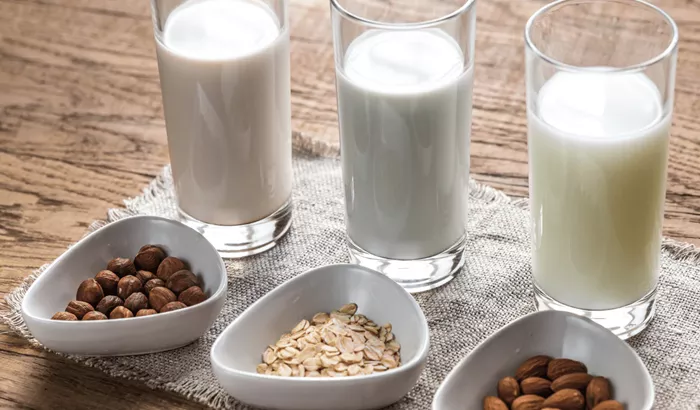In recent years, Americans have seen a noticeable shift in their dairy consumption habits. While cheese consumption is on the rise, the amount of milk being consumed has significantly decreased. This shift is reshaping how we get essential nutrients, such as calcium, and is raising important questions about the long-term effects on our health.
According to recent statistics, Americans are consuming more cheese than ever before. In 1975, the average American ate just 14 pounds of cheese per year. Fast forward to 2023, and that number has nearly tripled to 40 pounds. At the same time, milk consumption has taken a sharp dive. In 1975, the average American drank 29 gallons of milk annually, but by 2023, that number had dropped to just 15 gallons per year.
This dramatic shift has raised concerns among health experts about the impact of reduced milk intake, especially since milk has long been a primary source of calcium, a vital nutrient for bone health.
For those who don’t enjoy milk or prefer dairy alternatives, cheese has become a popular substitute, particularly as a source of calcium. Janelle Melgeorge Anderson, a registered dietitian with M Health Fairview, explains that for people who are not keen on drinking milk, cheese can be a good alternative. “If you’re looking for a way to get your calcium and don’t like milk, cheese is a solid option,” she says. “Calcium supplements can work, but getting it from food sources like cheese is often better because the body can digest and absorb it more effectively.”
However, while cheese can help meet calcium needs, it is also high in saturated fat and calories. Anderson encourages people to balance their intake, especially for those who are looking to maintain healthy weight and heart health.
Despite the increase in cheese consumption, the U.S. Department of Agriculture (USDA) reports that nearly 90% of Americans do not meet the recommended daily intake of dairy. Federal dietary guidelines suggest that children and adults consume two to three cups of dairy each day, which is essential for bone health, especially for younger children and older adults. Calcium plays a critical role in strengthening bones, and a deficiency can increase the risk of osteoporosis and fractures later in life.
For older adults, reduced dairy consumption often coincides with the development of lactose intolerance, a condition that makes it difficult to digest milk. Mitch Wildermuth, who once appeared in a “Got Milk?” commercial as a teenager, shared his own experience. “When I was younger, I could drink milk with no problem. But as I’ve gotten older, I find it harder to tolerate,” he said.
Lactose intolerance is a common condition that can develop with age. It occurs when the body stops producing enough lactase, the enzyme needed to break down lactose, the sugar found in milk. While many people with lactose intolerance find that they cannot drink milk, certain cheeses and yogurts contain less lactose and may be easier to digest.
Melgeorge Anderson advises that people who are lactose intolerant can still meet their calcium needs by choosing cheese varieties like hard cheeses (e.g., cheddar or Parmesan) and fermented dairy products like yogurt. “For those who can’t tolerate milk, there are many ways to get calcium, whether through cheese, yogurt, or plant-based alternatives,” she said.
The decline in milk consumption has prompted health experts to emphasize the importance of getting enough dairy or calcium-rich foods to maintain bone health throughout life. Calcium is crucial for children’s growth and development, but it remains important for adults as well, particularly for maintaining bone density as we age.
Federal guidelines suggest that adults aim for 1,000 mg of calcium per day, which increases to 1,200 mg for women over 50 and men over 70. Dairy products remain one of the best ways to achieve this, but for those who are lactose intolerant or prefer plant-based alternatives, fortified foods like almond milk, soy milk, and leafy greens can help fill the gap.
As Americans continue to shift away from traditional dairy habits, the increase in cheese consumption reflects changing tastes and dietary preferences. However, this shift underscores the importance of understanding how our dietary choices impact our health. While cheese offers a good source of calcium, it’s important to be mindful of its fat and calorie content. Ensuring that we meet our daily calcium needs—whether from dairy, plant-based options, or supplements—remains crucial for long-term bone health. With awareness and the right choices, Americans can continue to thrive, even as our dairy habits evolve.
Read more:
- Winter Vomiting Disease On The Rise: How To Avoid Norovirus And Its Tough Resistance
- How Eating More Plants And Exercising Could Reverse Your Biological Age
- Bird Flu Hits Cats Again: Another Raw Pet Food Brand Contaminated


